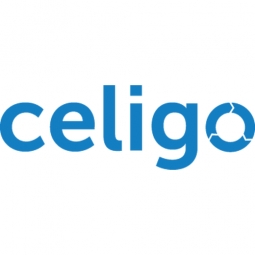下载PDF
OZNaturals' Rapid Ecommerce Automation Migration to Dynamics 365 with Celigo
技术
- 功能应用 - 企业资源规划系统 (ERP)
- 功能应用 - 库存管理系统
适用行业
- 水泥
- 建筑与基础设施
适用功能
- 物流运输
- 仓库和库存管理
用例
- 库存管理
- 拣选/分拣/定位
挑战
OZNaturals 是一家护肤品公司,最初作为仅在亚马逊上销售的白标产品推出,很快就成为最畅销的产品。该公司发展迅速,年销售额达数百万美元,并在 80 个国家/地区获得品牌认可。然而,该公司的运营并没有达到维持这种增长所需的复杂程度。他们使用的是需要手动数据输入的基本会计解决方案,并且尽管库存超过 100 万美元,但并未跟踪其库存。为了摆脱亚马逊的束缚,实现多元化,OZNaturals 需要将其电子商务活动扩展到自己的支持 Shopify 的网站,并由 3PL 仓库提供支持。这需要整个供应链的自动化流程,以从多个渠道提取订单,维持多个亚马逊市场的服务水平要求,确保正确的仓库中有足够的库存,并应对快速变化的市场。
关于客户
OZNaturals 是一家护肤公司,利用冷加工制造生产天然、清洁、抗衰老产品,以促进健康皮肤、皮肤修复和预防未来皮肤损伤。该公司由持照美容师 Angela Irish 在佛罗里达州创立,其产品在加拿大 FDA 认证的实验室生产。 OZNaturals 最初作为仅在亚马逊上销售的白标产品推出,很快成为最畅销的产品,年销售额达数百万美元,并在 80 个国家/地区享有品牌知名度。公司的使命是通过自己独特的产品扩大增长。
解决方案
OZNaturals 决定利用像 Celigo 这样的集成平台即服务 (iPaaS) 解决方案。他们首先使用 Celigo 将亚马逊订单与其 ERP 集成,然后建立了自己的电子商务网站 Shopify 并集成了 ERP,以及与两个仓库(一个在美国,另一个在加拿大)的定制 3PL 集成。这使他们能够自动化标准交易,同时管理不寻常的流程。 2021年,该公司决定将其ERP迁移到Microsoft Dynamics 365并改变其亚马逊运营。由于与 Celigo 的集成方式不同,他们能够在三个月内完成集成。他们还聘请了专家合作伙伴 Silverware 来与 Celigo 团队密切合作。 Celigo 解决方案的便利性开启了规模化的可能性。
运营影响
数量效益
相关案例.

Case Study
System 800xA at Indian Cement Plants
Chettinad Cement recognized that further efficiencies could be achieved in its cement manufacturing process. It looked to investing in comprehensive operational and control technologies to manage and derive productivity and energy efficiency gains from the assets on Line 2, their second plant in India.

Case Study
IoT System for Tunnel Construction
The Zenitaka Corporation ('Zenitaka') has two major business areas: its architectural business focuses on structures such as government buildings, office buildings, and commercial facilities, while its civil engineering business is targeted at structures such as tunnels, bridges and dams. Within these areas, there presented two issues that have always persisted in regard to the construction of mountain tunnels. These issues are 'improving safety" and "reducing energy consumption". Mountain tunnels construction requires a massive amount of electricity. This is because there are many kinds of electrical equipment being used day and night, including construction machinery, construction lighting, and ventilating fan. Despite this, the amount of power consumption is generally not tightly managed. In many cases, the exact amount of power consumption is only ascertained when the bill from the power company becomes available. Sometimes, corporations install demand-monitoring equipment to help curb the maximum power demanded. However, even in these cases, the devices only allow the total volume of power consumption to be ascertained, or they may issue warnings to prevent the contracted volume of power from being exceeded. In order to tackle the issue of reducing power consumption, it was first necessary to obtain an accurate breakdown of how much power was being used in each particular area. In other words, we needed to be able to visualize the amount of power being consumed. Safety, was also not being managed very rigorously. Even now, tunnel construction sites often use a 'name label' system for managing entry into the work site. Specifically, red labels with white reverse sides that bear the workers' names on both sides are displayed at the tunnel work site entrance. The workers themselves then flip the name label to the appropriate side when entering or exiting from the work site to indicate whether or not they are working inside the tunnel at any given time. If a worker forgets to flip his or her name label when entering or exiting from the tunnel, management cannot be performed effectively. In order to tackle the challenges mentioned above, Zenitaka decided to build a system that could improve the safety of tunnel construction as well as reduce the amount of power consumed. In other words, this new system would facilitate a clear picture of which workers were working in each location at the mountain tunnel construction site, as well as which processes were being carried out at those respective locations at any given time. The system would maintain the safety of all workers while also carefully controlling the electrical equipment to reduce unnecessary power consumption. Having decided on the concept, our next concern was whether there existed any kind of robust hardware that would not break down at the construction work site, that could move freely in response to changes in the working environment, and that could accurately detect workers and vehicles using radio frequency identification (RFID). Given that this system would involve many components that were new to Zenitaka, we decided to enlist the cooperation of E.I.Sol Co., Ltd. ('E.I.Sol') as our joint development partner, as they had provided us with a highly practical proposal.

Case Study
Splunk Partnership Ties Together Big Data & IoT Services
Splunk was faced with the need to meet emerging customer demands for interfacing IoT projects to its suite of services. The company required an IoT partner that would be able to easily and quickly integrate with its Splunk Enterprise platform, rather than allocating development resources and time to building out an IoT interface and application platform.

Case Study
Bridge monitoring in Hamburg Port
Kattwyk Bridge is used for both rail and road transport, and it has played an important role in the Port of Hamburg since 1973. However, the increasing pressure from traffic requires a monitoring solution. The goal of the project is to assess in real-time the bridge's status and dynamic responses to traffic and lift processes.

Case Study
Bellas Landscaping
Leading landscaping firm serving central Illinois streamlines operations with Samsara’s real-time fleet tracking solution: • 30+ vehicle fleet includes International Terrastar dump trucks and flatbeds, medium- and light-duty pickups from Ford and Chevrolet. Winter fleet includes of snow plows and salters.






